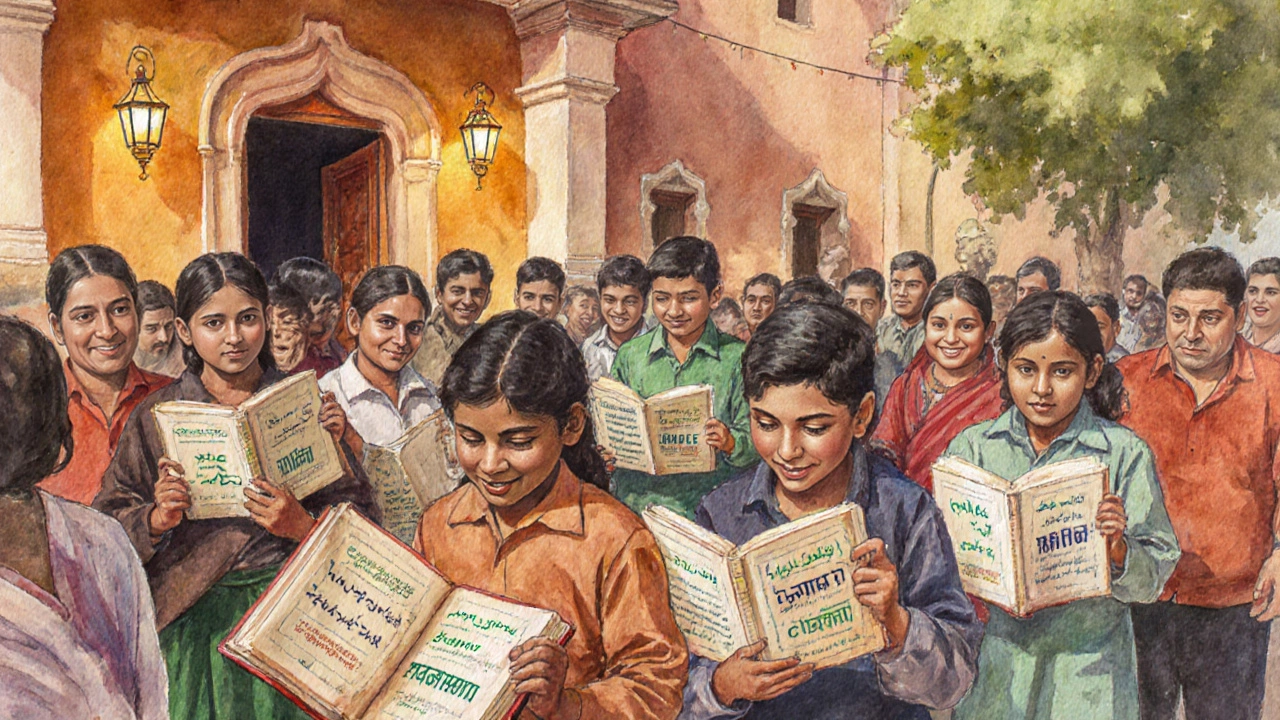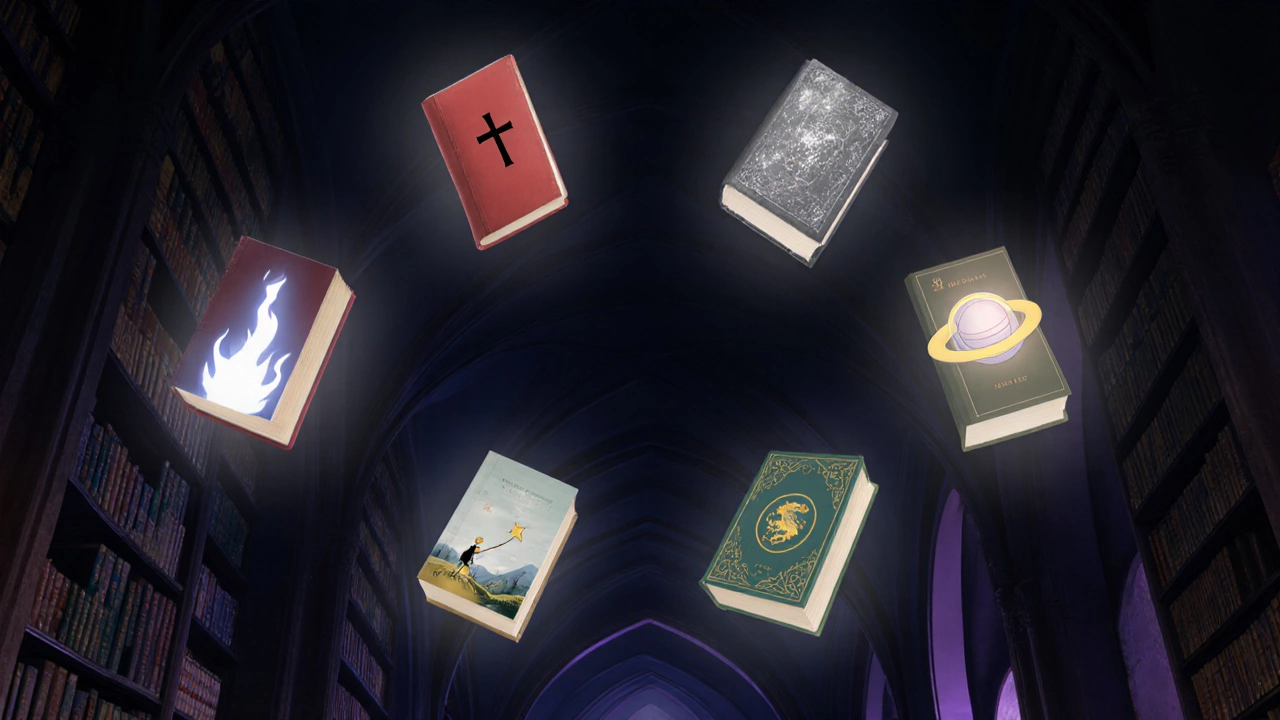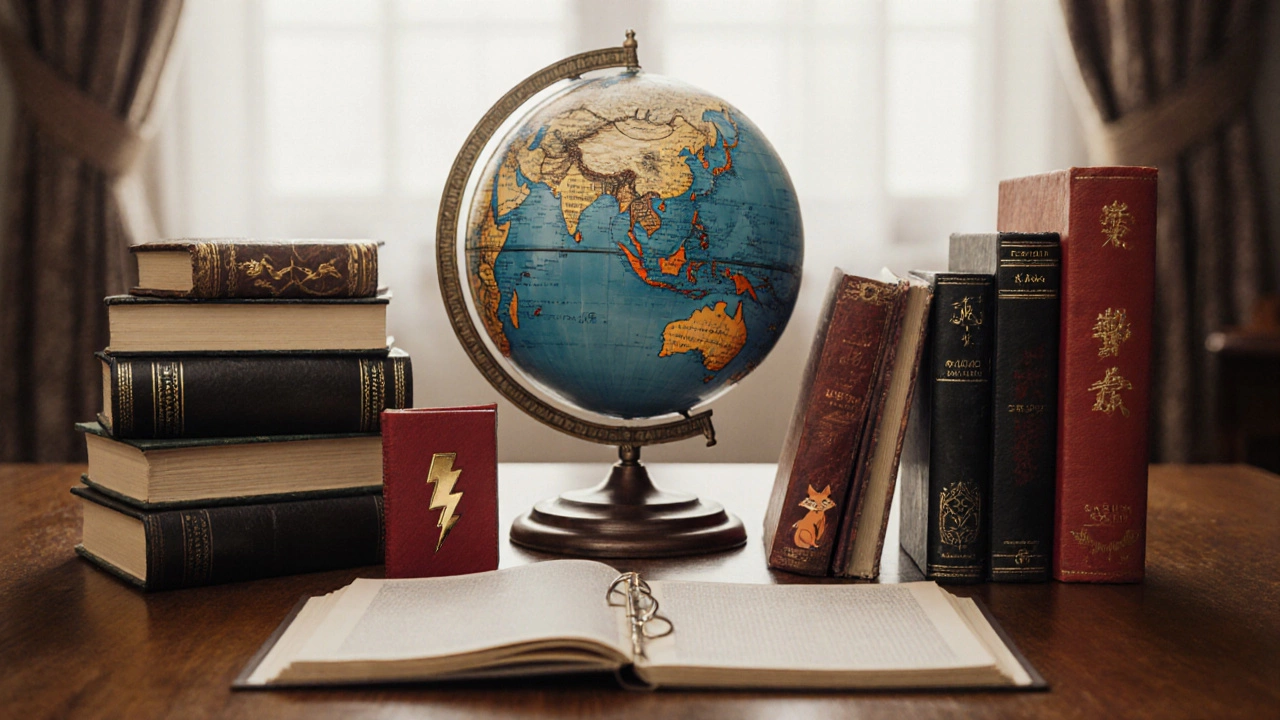Global Book Impact Calculator
Book Impact Assessment
Determine how your book might rank globally based on key factors that made the Bible the top-selling book worldwide.
Results
Ever wondered which title tops every bestseller list on the planet? The answer isn’t a recent blockbuster or a viral e‑book; it’s a work that has been printed, translated, and handed down for centuries. In this guide we break down the data, compare the biggest sellers, and explain why the #1 book still dominates the market today.
How "best‑selling" is Measured
Before naming the champion, we need a clear yardstick. Sales figures come from three main sources:
- Publisher‑reported copies sold worldwide.
- Independent audit firms that certify multi‑million sales (for example, Nielsen BookScan).
- Historical estimates for older works where exact numbers are unavailable.
We treat a "book" as any bound or digitally formatted text that has an ISBN or an equivalent publishing identifier. Religious scriptures, political pamphlets, and literary novels all qualify as long as they have been distributed through commercial channels.
The Global Heavyweights
Below is a snapshot of the titles that consistently appear at the top of any sales‑ranking study.
| Rank | Title | First Publication | Genre | Approx. Copies Sold |
|---|---|---|---|---|
| 1 | The Bible a collection of religious texts central to Christianity, compiled between 1400 BC and 100 AD | c. 1455 (first printed edition) | Religious | >5 billion |
| 2 | Quotations from Chairman Mao Zedong a political slogan book compiled in 1964, often called the "Little Red Book" | 1964 | Political | ≈ 1 billion |
| 3 | Harry Potter and the Philosopher’s Stone J.K. Rowling’s debut fantasy novel, published in 1997 | 1997 | Fantasy | ≈ 120 million |
| 4 | The Lord of the Rings J.R.R. Tolkien’s epic fantasy trilogy, first released in 1954‑55 | 1954‑55 | Fantasy | ≈ 150 million |
| 5 | The Little Prince Antoine de Saint‑Exupéry’s novella, published in 1943 | 1943 | Fable | ≈ 140 million |
| 6 | Dream of the Red Chamber One of China’s four great classical novels, written in the 18th century | c. 1791 | Literary Fiction | ≈ 100 million |
Notice the huge gap between rank 1 and the rest - the best‑selling book has sold billions of copies, far outpacing the next contender.
Why the Bible Holds the Crown
Three factors keep the Bible ahead of every other title:
- Universal Appeal: Christianity claims over 2.3 billion adherents, many of whom receive a copy at birth or during key life events.
- Continuous Re‑printing: Since the Gutenberg press, the Bible has been printed in more languages than any other work - over 3,400 translations to date.
- Institutional Distribution: Churches, missionary groups, and charitable organizations hand out free copies worldwide, inflating total sales numbers.
These mechanisms create a feedback loop: higher distribution fuels more cultural relevance, which in turn drives additional print runs.

Close Runners and Their Stories
Quotations from Chairman Mao Zedong dominated the 1960s and 1970s during China’s Cultural Revolution. Its sales peaked when the Chinese government mandated that every citizen own a copy. Even after the political climate shifted, the book’s historic shipments remain in the hundreds of millions.
Harry Potter and the Philosopher’s Stone sparked a generational reading boom. Its blend of magic and relatable teen angst made it the highest‑selling single‑title novel of the modern era.
For fantasy lovers, The Lord of the Rings set the template for epic world‑building, while The Little Prince endures as a philosophical bedtime story translated into more languages than almost any other work.
What Counts as a "Book"?
Some readers argue that pamphlets or scripture should be excluded from "book" rankings. However, the publishing industry treats any work with an ISBN (or a historic equivalent) as a book. This inclusive definition explains why a political manifesto and a children’s fable can sit side‑by‑side on the same list.

Implications for Readers
Knowing the #1 book isn’t a recommendation list; it’s a cultural barometer. If you’re looking for a reading experience that shaped billions of lives, the Bible is the obvious choice. If you prefer a modern narrative that sparked a global fandom, Harry Potter deserves a spot on your shelf.
For self‑help seekers, the lesson is simple: the most influential books often combine timeless themes with massive distribution networks. Look for titles that address universal human concerns and have proven staying power.
Quick Checklist for Picking a High‑Impact Book
- Check the book’s translation count - more languages usually mean broader relevance.
- Look for institutional endorsements (schools, churches, NGOs).
- Consider the publication’s longevity - titles over 50 years old often have proven durability.
- Read reviews from diverse cultural perspectives to gauge universal appeal.
Frequently Asked Questions
Is the Bible really the best‑selling book ever?
Yes. Estimates from multiple publishers and research firms place total copies sold above five billion, far exceeding any other title.
Do digital copies count toward the sales figures?
Most modern rankings include e‑books and audiobooks, but the Bible’s numbers are dominated by printed copies because the bulk of its sales happened before the digital era.
Why isn’t the Quran listed among the top sellers?
The Quran’s distribution is largely through free religious channels, and many of its copies lack commercial ISBNs, so they’re often omitted from sales‑based rankings.
Can a self‑help book ever become the #1 book worldwide?
It’s unlikely under current market conditions because self‑help titles usually target niche audiences. However, a globally resonant message combined with massive institutional promotion could bridge the gap.
How reliable are the sales estimates for older books?
Figures for centuries‑old works rely on scholarship that combines printing records, translation counts, and historical accounts. While not exact, the consensus is strong enough for ranking purposes.

